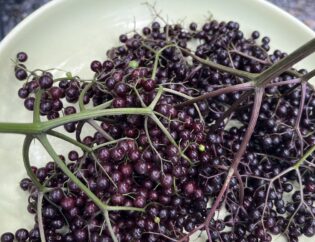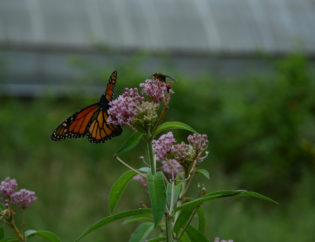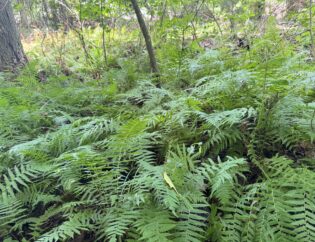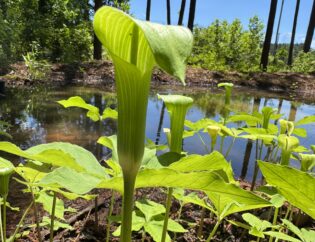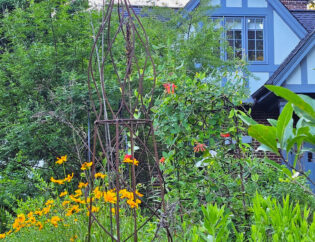Amid one of the wettest years in recent history most plants are soaking in a bounty of water and putting out huge amounts of flowers. Some are also underwater! We had 6″ of water in the rain gauge at the farm last week. It had another 1.5″ when I emptied it today and showers are in the forecast. So, while the humidity slowly stews my brain, look at these pretty pictures I took and enjoy the fact that you are most likely internetting inside with A/C.
 Rattlesnake Master (Eryngium yuccafolium) is still blooming, but last time I posted I did not know about the huge patch of these plants we have on the other side of the farm.
Rattlesnake Master (Eryngium yuccafolium) is still blooming, but last time I posted I did not know about the huge patch of these plants we have on the other side of the farm.
A close up of the crazy little flowers. An interesting member of the Parsley/Carrot family.
Beautyberry (Callicarpa americana) is also blooming nearby. You probably would recognize it easier by the bright purple berries it puts out in fall. Here’s a pic from last September:
You may know this shrubby plant, but what you might not know is that it’s actually a member of the mint family. Compare its leaves to any other plant in the mint family and you’ll see the similarity.
The Rosepink (Sabatia angularis) in the nursery are blooming. This is a biennial plant, meaning it takes 2 years to reach maturity and flower. It spends the first year of its life as a low growing rosette of glossy, rounded leaves. This year, year two, the basal leaves die back and a stalk topped with multiple blooms sprouts up to about three feet tall. Just like most annuals, these plants produce prolific amounts of flowers and seeds to ensure their survival.
St. Andrew’s Cross or Creeping St. John’s Wort (Hypericum stragulum) is blooming in the shady nursery. It’s a low-growing, creeping ground cover perfect for areas under tree canopy.
 Out in the front beds by the road are many hundreds of blooms. This area was literally buzzing with bees and teeming with butterflies when I walked up. The orange flowers are Milkweed (Asclepias tuberosa), and the purple spikes are Blazing Star (Liatris spicata) which you might recognize from a commercial bouquet, as it is popular in the florist trade. There is also some Purple Coneflower (Echinacea purpurea) back there, and the tall ones in the way back are Mountain Mint (Pycnanthemum incanum) getting ready to flower and lure the bees down the line with their abundant blooms.
Out in the front beds by the road are many hundreds of blooms. This area was literally buzzing with bees and teeming with butterflies when I walked up. The orange flowers are Milkweed (Asclepias tuberosa), and the purple spikes are Blazing Star (Liatris spicata) which you might recognize from a commercial bouquet, as it is popular in the florist trade. There is also some Purple Coneflower (Echinacea purpurea) back there, and the tall ones in the way back are Mountain Mint (Pycnanthemum incanum) getting ready to flower and lure the bees down the line with their abundant blooms.
Blazing Star close up.
Also blooming in the front bed is Culver’s Root (Veronicastrum virginianum).
A little farther down the line is Sensitive Briar (Mimosa microphylla). Unlike the invasive, giant trees from Asia that are rampant in Georgia, especially in Interstate corridors, this is a low, creeping, thorny vine. The opposite leaflets will contract, or fold together if touched, shaken, or otherwise disturbed. This defense against herbivores makes the tiny thorns that line the stem more exposed and the leaves harder to get to without painfully encountering aforementioned thorns. Watch:
It’s fun. You can get the whole branch by shaking it:
And what would a blog post be without a butterfly picture?
Our old, dear friend Spicebush Swallowtail, but this time on the flowers of a Bottlebrush Buckeye (Aesculus parviflora). It’s only about 50 feet from the area where we keep the Spicebush (Lindera bezoin), so once this lady (I think…) finds a mate there are plenty of egg laying sites nearby.
That’s most of what is blooming today on the farm, so until next time, try to remain dry and thankful for the rain, even when the pavement is steaming.









